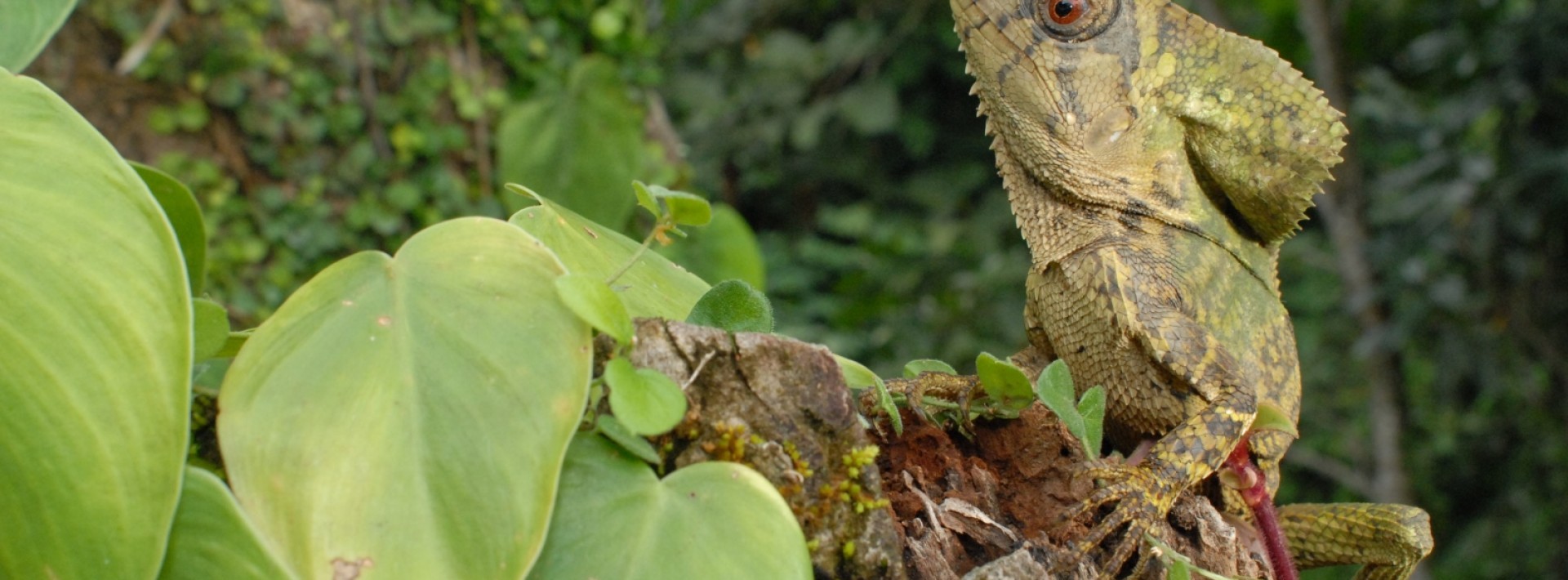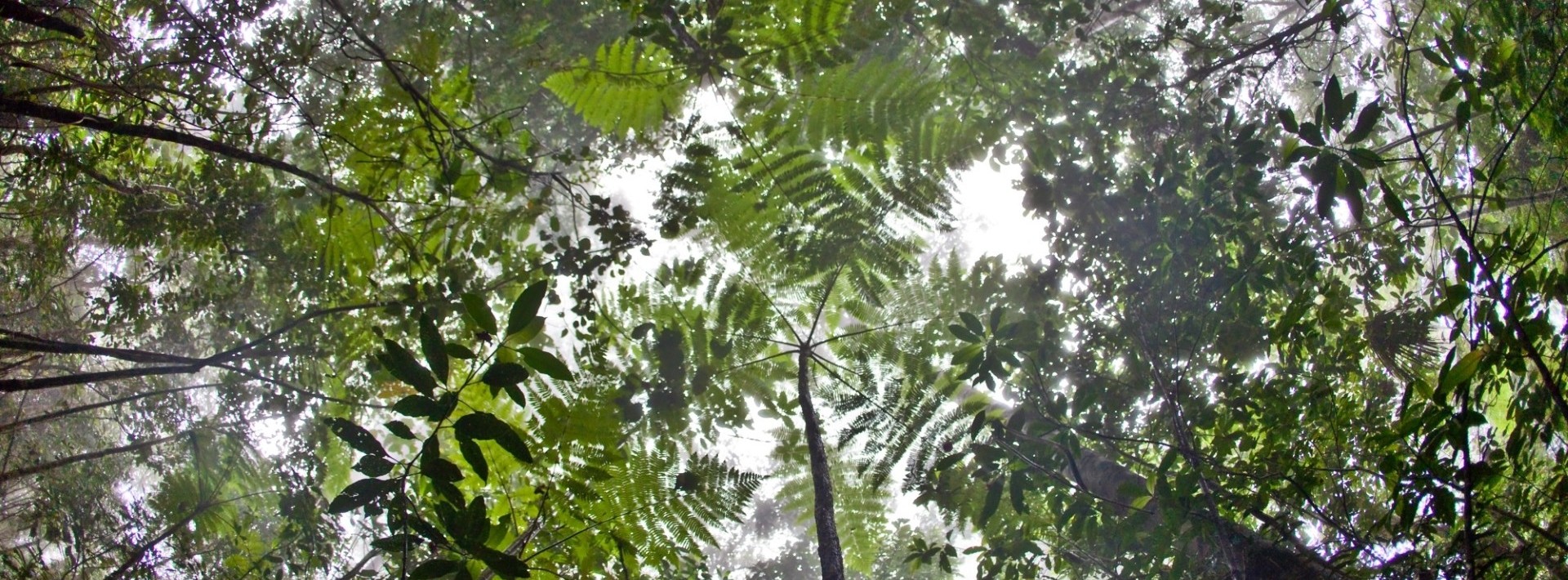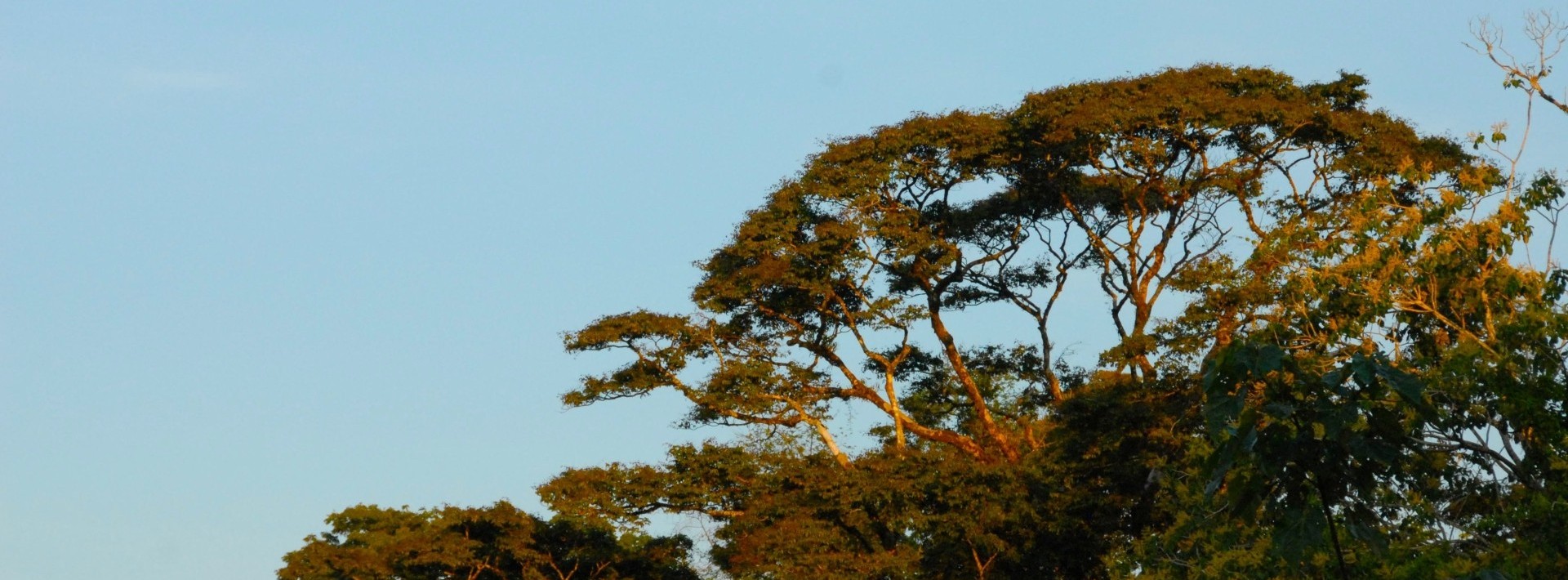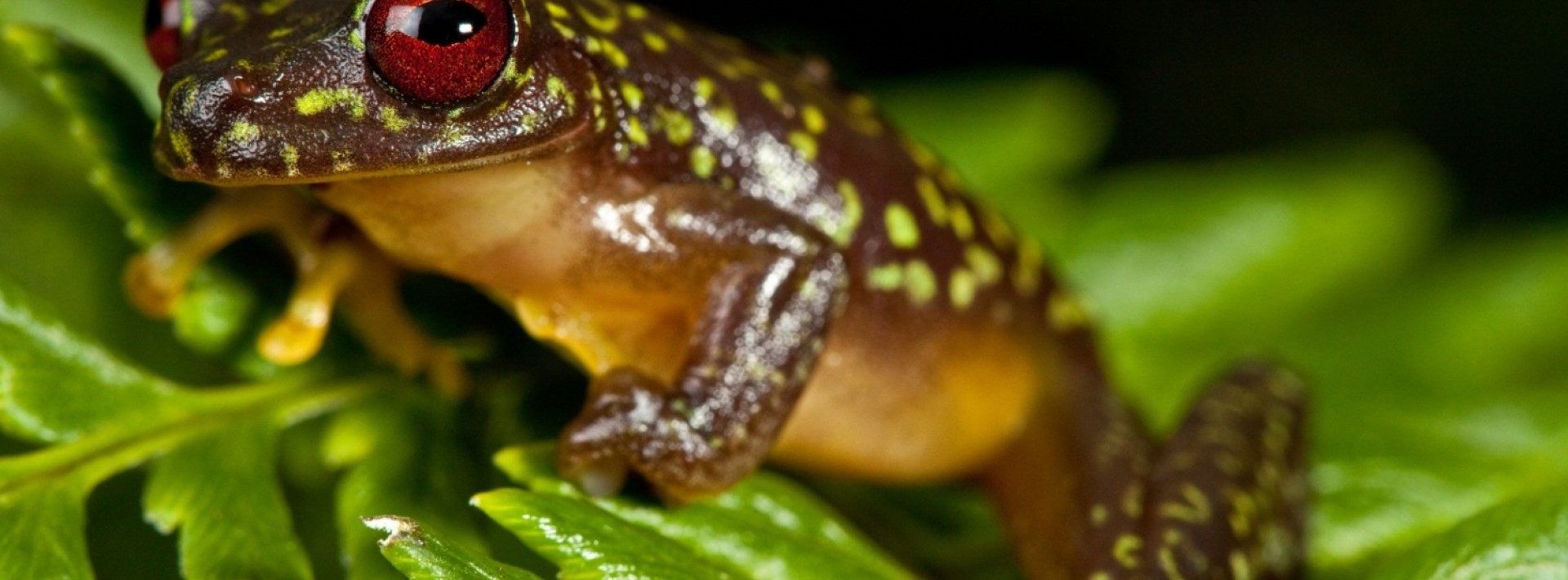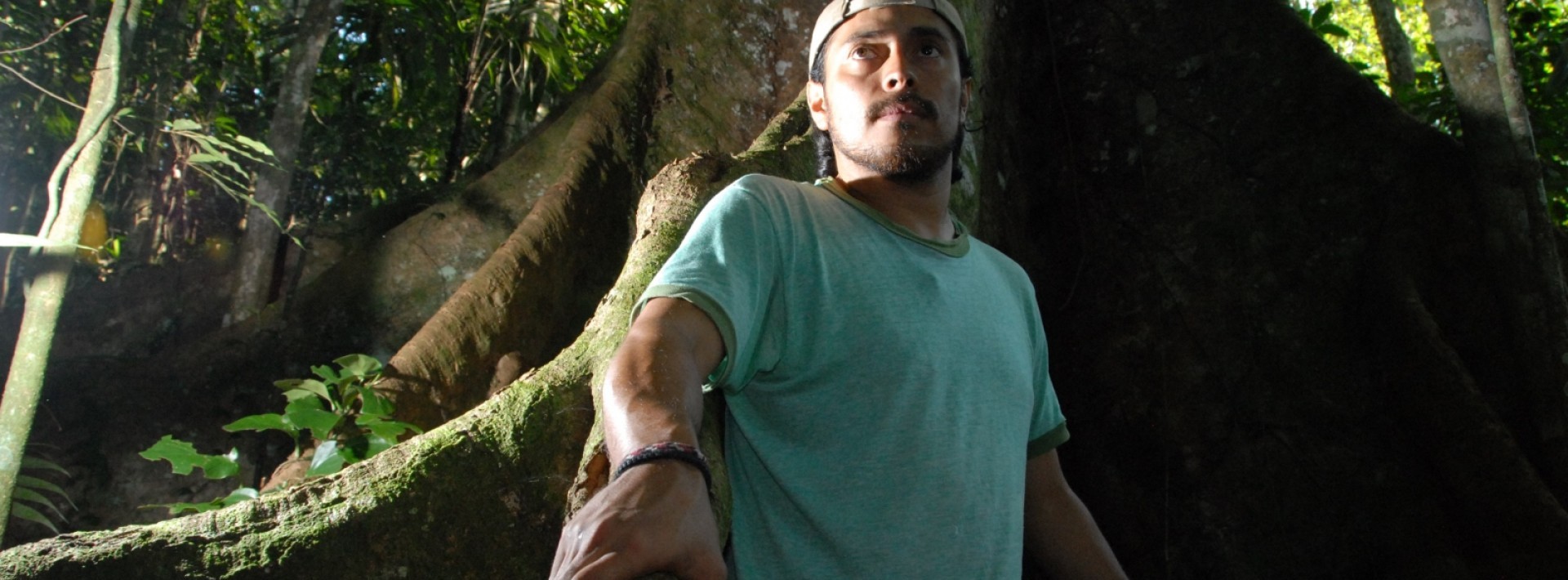In Brief
Conservation Value:
Sierra Caral is one of the most biodiverse forest remnants in Central America. It protects ten endangered and seven endemic amphibian species and is a critical refuge for 120 Neotropical migratory bird species, including 33 priority species with declining populations. It provides key ecosystem services such as clean water, watershed protection, and carbon storage, a key mitigating factor in climate change. It is a vital component of biological corridors at the regional scale.
Threats:
The new reserve protects these high-value forests from further fragmentation and clearing for ranching. Associated activities address long-term threats of population growth and poverty within local communities.
Actions & Results:
- Conservation groups collaborated to purchase 1901 ha of forest for a permanent reserve. Four guards will monitor and protect the area.
- The new reserve helped spur the declaration by the government of Guatemala of the 19,600- hectare Sierra Caral National Protected Area in 2014—a huge conservation win!
- To reduce the pressures that lead to deforestation, our Guatamalan NGO partner will continue rural development activities, including: conservation coffee production, community forest protection incentives, reproductive health clinics, community land titling and agroforestry.
 |
| Waterfall in the Sierra Caral reserve. Photo: FUNDAECO |
Goal:
To secure permanent protection of the Sierra Caral cloud forest and its threatened amphibians
This project is fully funded at present.
(Support is welcome for other projects)
Location:
Caribbean coast of Guatemala
Size of Area Involved:
1901 hectares. Compare with:
— 4.7 times larger than Vancouver's Stanley Park (405 ha)
— 5 ½ times larger than New York's Central Park (341 ha)
Project Field Partner:
Fundación para el Ecodesarrollo y la Conservación
Our Investment to Date:
ICFC portion $235,000 (21%) in 2012. Total: $1,120,000 (purchase price, incl. tax)
In More Depth...
Our partners in this acquisition are Fundación para el Ecodesarrollo y la Conservación (FUNDAECO), the Guatemalan NGO that now owns and will manage and protect the new reserve, along with lead partner Global Wildlife Conservation, the American Bird Conservancy, Nature and Culture International, World Land Trust-US, the Amphibian Specialist Group through Conservation International, and the US Fish and Wildlife Service from its Neotropical Migratory Bird Conservation Act grants. In addition, the IUCN Save Our Species fund is providing funds (beyond the $1 million purchase price) for management costs of the new Sierra Caral reserve.
Key people behind this effort are Marco Cerezo of FUNDAECO, Don Church of Global Wildlife, Claude Gascon of the Amphibian Specialist Group, and Carlos Vasquez Almazán, Curator of Herpetology at the National University of San Carlos's Museum of Natural History in Guatemala and Coordinator of FUNDAECO's Amphibian Conservation Program. Carlos Vasquez drew international scientific attention to the conservation importance of the Sierra Caral, for which he was recently awarded the prestigious Whitley Award for Conservation (see video, below).
This lovely video (2:43 min.) narrated by Sir David Attenborough relates the origins of the Sierra Caral reserve and the role of Whitley Award winner Carlos Vasquez.
Geography and biology
Located near the Caribbean coast of Guatemala and close to the border with Honduras, the Sierra Caral is a unique and isolated massif rising from sea level to 1,167 meters. Exposed to moisture-laden Caribbean trade winds, it supports a transitional ecosystem of wet rainforests on southfacing rain-shadow slopes. The combination of topographical and climatic conditions have created an unparalleled center of endemism for amphibians and reptiles and it is one of the most biodiverse forest remnants in Central America.
Seven endemic species of amphibians have recently been discovered here. No fewer than 35 percent of the amphibians of Sierra Caral are listed as Threatened by IUCN, with five Critically Endangered, and five Endangered.
Sierra Caral is also a critical refuge for 120 Neotropical migratory bird species, including 33 priority species with declining populations. It harbors 13 range restricted bird species and two IUCN Vulnerable species — Mountain Guan and Keel-billed Motmot — and the "Near Threatened" Painted Bunting. Of 219 bird species recorded for Sierra Caral, 46 are on the Guatemalan CONAP Red List.
Sierra Caral has been identified by the Alliance for Zero Extinction as a global priority for conservation. Discoveries of new and endemic fauna and flora are expected from this little known massif.
|
Table 1: Threatened species found in the Sierra Caral protected area, with IUCN Red List designation. Threatened species: Near Threatened species: |
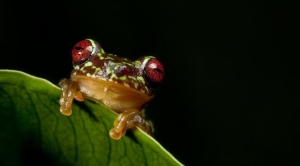 |
Copan Brook Frog (Duellmanohyla soralia). Protection of Sierra Caral's remaining forest is vital to the survival of this Critically Endangered species. (Robin Moore / robindmoore.com). |
 |
Giant Palm Footed Salamander (Bolitoglossa dofleini). This native of Sierra Caral is one of the world's largest arboreal salamanders. |
 |
The Blue Pitviper (Bothriechis thalassinus) is a rare arboreal species only recently discovered and endemic to the Sierra Caral area |
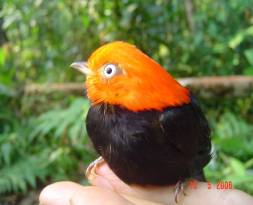 |
Red-capped Manakin, Pipra mentalis |
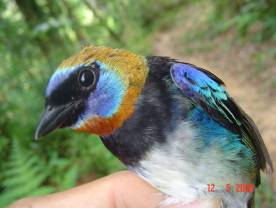 |
Golden-hooded Tanager, Tangara larvata |
 |
Crimson-collared Tanager, Phlogothraupies sanguinolenta |
Ecological value
The Sierra Caral Mountain Range is an important element of the Motagua River watershed. It provides the headwaters for three small rivers, and is crossed by four major rivers that originate in Honduras: Cacao, Animas, Chiquito and Bobos. Forested slopes safeguard water quality and quantity for human consumption and agriculture, provide protection from erosion, landslides, crop damage, and flooding, and prevent sedimentation in the floodplain and Gulf of Honduras.
The broader Sierra Caral area in which the reserve is located is an important gene bank for several commercial tree species, and is a source of various timber and non-timber forest products used by local communities. The high-elevation forests also provide shade for shade coffee plantations near the Negro Norte sector.
The Sierra Caral is vital to maintain the regional connectivity of key biological corridors at the regional scale. It is a crucial component of the Mesoamerican Biological Corridor (also referred to as Paseo Pantera), as well as the Caribbean Biological Corridor of Guatemala. It is located within a network of other protected areas: Esp ritu Santo to the south, Punta de Manabique to the north, Montaña Chiclera to the west, and Cerro San Gil to the northwest.
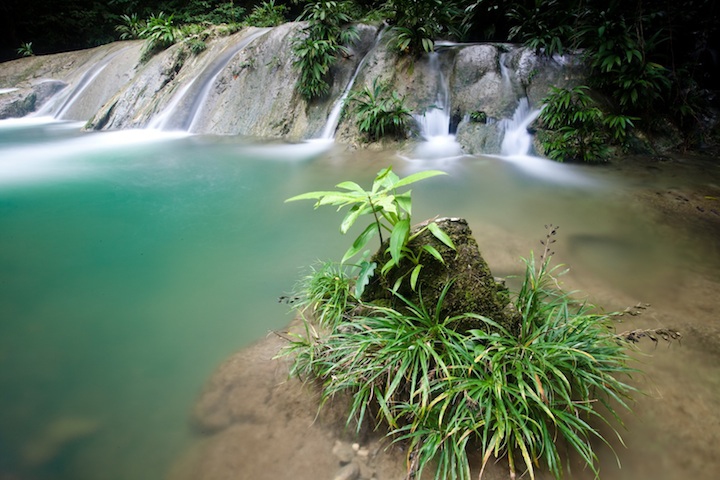 |
| The Sierra Caral is an important provider of key ecosystem environmental services, especially as a source of clean water and watershed protection at local and regional levels. Photo: Robin Moore/robindmoore.com |
Actions and Results
The purchased properties, known as Finca La Firmeza, are the last two major forested properties in the core of the Sierra Caral massif. The agreed price (including taxes) from the seller Banco Industrial de Guatemala was US$1,120,000 ($589/ha or $238/acre), which was below market value. Together they form the new reserve, whose formal name is Reserva Hídrica y Forestal Sierra Caral (Sierra Caral Water and Forest Reserve).
Legal Safeguards for conserving the acquired property
- All contracts for the acquisition of the property stipulate that the land will be maintained exclusively for conservation purposes.
- The properties have been registered as a private nature reserve; as such, the land is a legally declared protected area and part of the Guatemalan System of Protected Areas.
- FUNDAECO will register a Conservation Easement (Anotación Registral), which is a legally binding covenant stating that the properties are dedicated exclusively to conservation purposes.
- FUNDAECO will continue to urge National Congress to declare a broader Protected Area in Sierra Caral. Within this Protected Area, the two properties will be designated as "core" or a full protection zone.
- One hectare of each of the two properties will be registered in the name of the International Conservation Fund of Canada; simultaneously, mutually binding conservation easements will be registered on each one-ha property, as with the remainder of the property. This confers on ICFC the legal right to defend its conservation easement over the two properties in Guatemalan courts.
Future protection and management of the acquired property
- FUNDAECO's local office in the nearby City of Morales will manage the reserve. This office, which has been operating for almost ten years, is well equipped (vehicle, motorcycle, computers, GIS System, etc.) and staffed with a small and committed team of local conservationists (one agronomist; one biologist; one environmental educator; one agro-forestry technician, one GIS technician, one accountant, and two community promoters).
- FUNDAECO will employ park guards to protect the Sierra Caral reserve.
- To oversee management of the Sierra Caral Reserve, FUNDAECO is forming an Advisory Committee that will include one or more of the major financial contributors to the land purchase.
- FUNDAECO applied to the National Forest Incentives Program and was granted an annual allowance of approximately US$27,500 for the protection of the forest for a five-year period.
- Monitoring by guards will be supplemented by overflights and patrols by the National Army and the Natural Resources Police Department.
- FUNDAECO will endeavour to raise funds to employ a Reserve Manager to lead management activities and oversee park guards.
- FUNDAECO will continue its current community activities, aimed at reducing the pressures that lead to deforestation and building support for the Reserve. These include environmental education and community consultations, as well as sustainable development projects such as community reforestation, agroforestry, land titling, organic coffee production, and dairy processing. They are also working in partnership with the Guatemala Ministry of Health and the Planned Parenthood Federation of America to establish a network of reproductive health clinics for rural women.
 |
| Deforestation at Sierra Caral. photo: Robin Moore/robindmoore.com |
International Conservation Fund of Canada Copyright © 2009-2025
Registered Canadian charity # 85247 8189 RR0001

